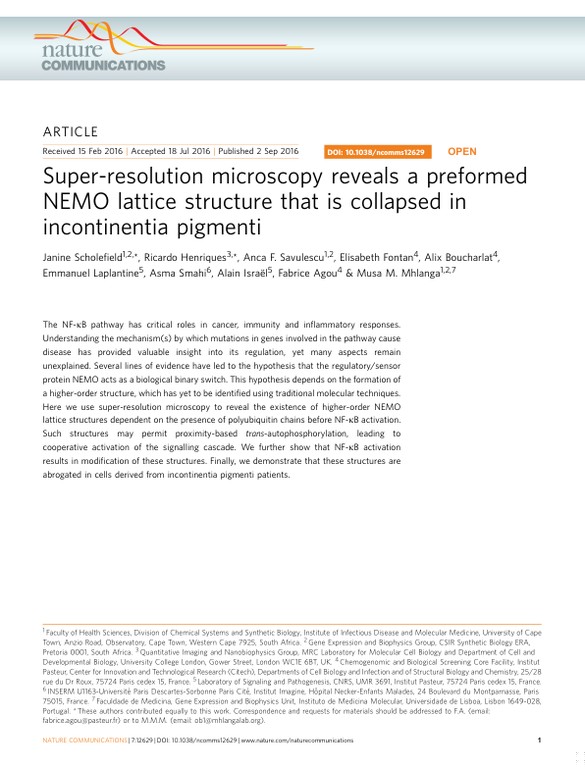Super-resolution microscopy reveals a preformed NEMO lattice structure that is collapsed in incontinentia pigmenti
Technologies: QuickPALM
Paper published in Nature Communications, January 2016
Publisher: Nature Publishing Group UK London

The manuscript published in Nature Communications in 2016 by Scholefeld et al. explores the higher-order structure of NEMO, a crucial component of the NF-kB signaling pathway, using super-resolution microscopy. The study reveals that NEMO forms a lattice structure in non-stimulated cells, which is reliant on the presence of polyubiquitin chains and IKK:NEMO binding. The researchers also discovered that IKK subunits, both inactive and active forms, form lattice structures similar to NEMO, leading them to perform dual STORM analysis in MEFs. They observed a significant decrease in larger NEMO lattice structures in MEFs lacking IKKa and b-subunits, suggesting an essential role for IKKb subunits in maintaining preformed NEMO lattices. Furthermore, the study investigated the clinical relevance of NEMO structures by analyzing fibroblasts with NEMO mutations acquired from IP patients. They found that IP-derived cells had a significant reduction in preformed lattice structures and an increase in smaller structures. Overall, the findings demonstrate the importance of higher-order oligomerization of NEMO in the NF-kB signaling response and emphasize how super-resolution microscopy can provide novel insights into the single-molecule mechanisms of genetic disorders.